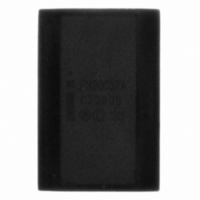GT28F320C3TA110 Intel, GT28F320C3TA110 Datasheet - Page 29

GT28F320C3TA110
Manufacturer Part Number
GT28F320C3TA110
Description
IC FLASH 32MBIT 110NS 47MBGA
Manufacturer
Intel
Specifications of GT28F320C3TA110
Rohs Status
RoHS non-compliant
Format - Memory
FLASH
Memory Type
Advanced + Boot Block FLASH
Memory Size
32M (2M x 16)
Speed
110ns
Interface
Parallel
Voltage - Supply
2.7 V ~ 3.6 V
Operating Temperature
-40°C ~ 85°C
Package / Case
47-MBGA
Other names
820978
Available stocks
Company
Part Number
Manufacturer
Quantity
Price
5.3
5.4
5.5
Datasheet
Locking Operations during Erase Suspend
Changes to block-lock status can be performed during an erase-suspend by using the standard
locking command sequences to Unlock, Lock, or Lock Down a block. This is useful in the case
when another block needs to be updated while an Erase operation is in progress.
To change block locking during an Erase operation, first issue the Erase Suspend command (0xB0),
then check the status register until it indicates that the Erase operation has been suspended. Next,
write the preferred Lock command sequence to a block and the Lock status will be changed. After
completing any preferred Lock, Read, or Program operations, resume the Erase operation with the
Erase Resume command (0xD0).
If a block is Locked or Locked Down during a Suspended Erase of the same block, the locking
status bits will be changed immediately. But when the Erase is resumed, the Erase operation will
complete.
Locking operations cannot be performed during a Program Suspend. Refer to
State Machine States” on page 50
Erase Suspend.
Status Register Error Checking
Using nested-locking or program-command sequences during Erase Suspend can introduce
ambiguity into status register results.
Since locking changes are performed using a two-cycle command sequence, e.g., 0x60 followed by
0x01 to lock a block, following the Block Lock, Block Unlock, or Block Lock-Down Setup
command (0x60) with an invalid command will produce a Lock-Command error (SR[4] and SR[5]
will be set to 1) in the Status Register. If a Lock-Command error occurs during an Erase Suspend,
SR[4] and SR[5] will be set to 1 and will remain at 1 after the Erase is resumed. When Erase is
complete, any possible error during the Erase cannot be detected via the status register because of
the previous Lock-Command error.
A similar situation happens if an error occurs during a Program-Operation error nested within an
Erase Suspend.
128-Bit Protection Register
The C3 device architecture includes a 128-bit protection register than can be used to increase the
security of a system design. For example, the number contained in the protection register can be
used to “match” the flash component with other system components, such as the CPU or ASIC,
preventing device substitution. The Intel application note, AP-657 Designing with the Advanced+
Boot Block Flash Memory Architecture, contains additional application information.
The 128 bits of the protection register are divided into two 64-bit segments. One of the segments is
programmed at the Intel factory with a unique 64-bit number, which is unchangeable. The other
segment is left blank for customer designs to program, as preferred. Once the customer segment is
programmed, it can be locked to prevent further programming.
for detailed information on which commands are valid during
Intel
£
Advanced+ Boot Block Flash Memory (C3)
Appendix A, “Write
29












